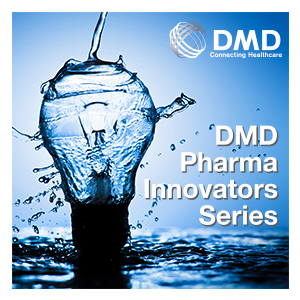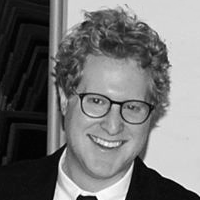 I sat down with Paul Kudlow, MD, the CEO and co-founder of TrendMD. The abbreviated interview was posted on our blog. Below is the full text of our conversation.
I sat down with Paul Kudlow, MD, the CEO and co-founder of TrendMD. The abbreviated interview was posted on our blog. Below is the full text of our conversation.
1. What trends do you see among your clients in terms of managing and leveraging information?
Over the last year, I’ve seen a big emphasis on authentication. Authentication comes in all kinds of different forms, but what our publishers really want to know is who is reading their papers. Is it researchers? Is it doctors? What are their specialties? What were they reading before they came to the publisher’s content? They’re not necessarily looking for personal identities, but for information about their readers’ fields and specialties.
2. How invested are your clients in managing this data and in digital channels in general? Where are the gaps?
Digital channels are still a relatively new concept for scholarly publishers. Over the last 10 or 15 years, most doctors—including young researchers or even those in the principal investigator stage of their careers—have shifted to conducting research online.
At this point, around 8,000 peer-reviewed papers are published every day in biomedicine alone. That research is easily searchable, but search is only useful so long as you know what you’re searching for. The central problem here is that because of the massive quantity of content, it's impossible for researchers, or doctors, or academics to have an ambient awareness of what is interesting to them, or what, potentially, could be useful to them.
One of the risks is that as recommendation systems get more personalized, they can actually reinforce the filter bubble. On the consumer side, the bubble is a problem because it amplifies your own opinions and doesn’t let you see other people’s views on various issues. It’s potentially an even bigger issue for medicine.
The key is finding a way to make relevant research easily discoverable, and the scholarly world is just starting to look into this. That's where TrendMD fits in, because we're a channel that allows them to market their content direct to readers.
Figuring out who reads what and where the readers are coming from is what really empowers the publishers’ decisions on which papers they do and don’t want to promote. We're tackling that by monitoring the reading habits of these individuals. Over time, our long term vision is to become almost like an AI service that recommends papers based on highly contextual information, such as which patients a doctor just saw.
For example, if you have a patient with hypertension, you may not know all the different ways that similar patients may have been treated by other doctors. Practicing physicians, in many cases, almost have tunnel vision, because you can only have so much in your brain.
Recommender services are key for overcoming that because they can expand your horizon and really allow you to tap into what other people are doing and what other treatments have worked for certain diseases.
3. Take me to 2020. Do you think that physicians will be consuming information in any ways that are different from today? If so, in what ways?
At TrendMD we do recommendations for science, technology, and medicine, as well as non-STEM fields like the social sciences, law, accounting, and business. The more we details we know about what a doctor is reading, the better our article recommendations can be.
Discoverability and search services will continue to get better and better. One of the risks is that as recommendation systems get more personalized, they can actually reinforce the filter bubble. On the consumer side, the bubble is a problem because it amplifies your own opinions and doesn’t let you see other people’s views on various issues. It’s potentially an even bigger issue for medicine.
If you only see certain patients and only engage with certain literature, the recommender system will become so personalized that it doesn't give you anything else. You’ll get more of a siloing effect, which slows science down and limits innovation.
At TrendMD, our vision is to break free of that. It’s a challenge, because people engage on things that they like and companies are incentivized to present content that people will click on. Consumers may not like serendipity, so that you actually might have a dip in engagement rates if you're driving search results that aren’t personalized to them, even if it’s popular content.
 We haven't solved it yet, but ultimately we want to drive serendipity, not the filter bubble. It's a fine balance between the two.
We haven't solved it yet, but ultimately we want to drive serendipity, not the filter bubble. It's a fine balance between the two.
4. What do you find attractive about the DMD product portfolio?
AIM is the biggest attractor for us. The ability to identify the doctors in the AIM network is hugely valuable, because the more we know about what a doctor is reading, the more we can predict what he should be reading or what might interest him.
At TrendMD we do recommendations for science, technology, and medicine, as well as non-STEM fields like the social sciences, law, accounting, and business. All the same principles apply. The more we details we know, the better our article recommendations can be.
5. Tell us about how you went from being a doctor to being the CEO of a successful startup.
It's definitely been a journey. In my second year of medical school, I published my first research paper. I was really excited about it until I realized how difficult it is for published authors to get in front of their correct audience.

This is awful for the researcher, who probably spent hundreds of hours constructing the paper. It's also bad for science in general, because if the research doesn’t get into the right doctors’ hands, it can’t be used.
I became obsessed with solving this problem, and eventually met my co founder, Alan Rutledge, on a platform called AngelList. We took about two years to settle on the concept, and then, while I was in residency, Alan came to me and said, "Let's do Outbrain® for scholarly content."
So we started thinking about how to adapt the idea of consumer recommendations to the scholarly web. Within a couple of weeks, I took a leave of absence, and the rest is history.
6. What are some of the things that you've learned about the medical publishing industry?
The medical publishing industry is a small, tight-knit network of individuals that control a lot of different properties and a lot of different content. I think of it as providing three core values to readers and authors.
The first is permanence. When you publish in a journal or with a publisher, your content should be indexed forever. The second is peer review, or quality control. The third is distribution. Researchers publish in high profile journals because we want people to read our work. TrendMD really supports the third value proposition.
 Graduating from medical school in 2013, Paul Kudlow faced two frustrating challenges that he realized cause many doctors to feel immense pressure: (1) keeping up with the over 8,000 new articles published every 24 hours, and (2) ensuring that your published research gets read by your target audience. Aiming to help rectify this problem, Paul co-founded TrendMD with Alan Rutledge and Dr. Gunther Eysenbach. TrendMD surfaces recommended articles on medical journals, blogs, and other sites that doctors and researchers use in their day-to-day. The article recommendations platform facilitates content discovery, and enables content producers to reach their target audience. TrendMD, a Y-Combinator venture backed company with 30 employees, is now in use by over 3,300 journals published by over 300 publishers and seen by 80M readers per month, and continuing to grow at 20% month-over-month. Other than his work at TrendMD, Paul is completing a PhD in the area of bibliometrics and content discovery from the Institute of Medical Sciences at the University of Toronto, and is currently on leave of absence from his medical residency.
Graduating from medical school in 2013, Paul Kudlow faced two frustrating challenges that he realized cause many doctors to feel immense pressure: (1) keeping up with the over 8,000 new articles published every 24 hours, and (2) ensuring that your published research gets read by your target audience. Aiming to help rectify this problem, Paul co-founded TrendMD with Alan Rutledge and Dr. Gunther Eysenbach. TrendMD surfaces recommended articles on medical journals, blogs, and other sites that doctors and researchers use in their day-to-day. The article recommendations platform facilitates content discovery, and enables content producers to reach their target audience. TrendMD, a Y-Combinator venture backed company with 30 employees, is now in use by over 3,300 journals published by over 300 publishers and seen by 80M readers per month, and continuing to grow at 20% month-over-month. Other than his work at TrendMD, Paul is completing a PhD in the area of bibliometrics and content discovery from the Institute of Medical Sciences at the University of Toronto, and is currently on leave of absence from his medical residency.





